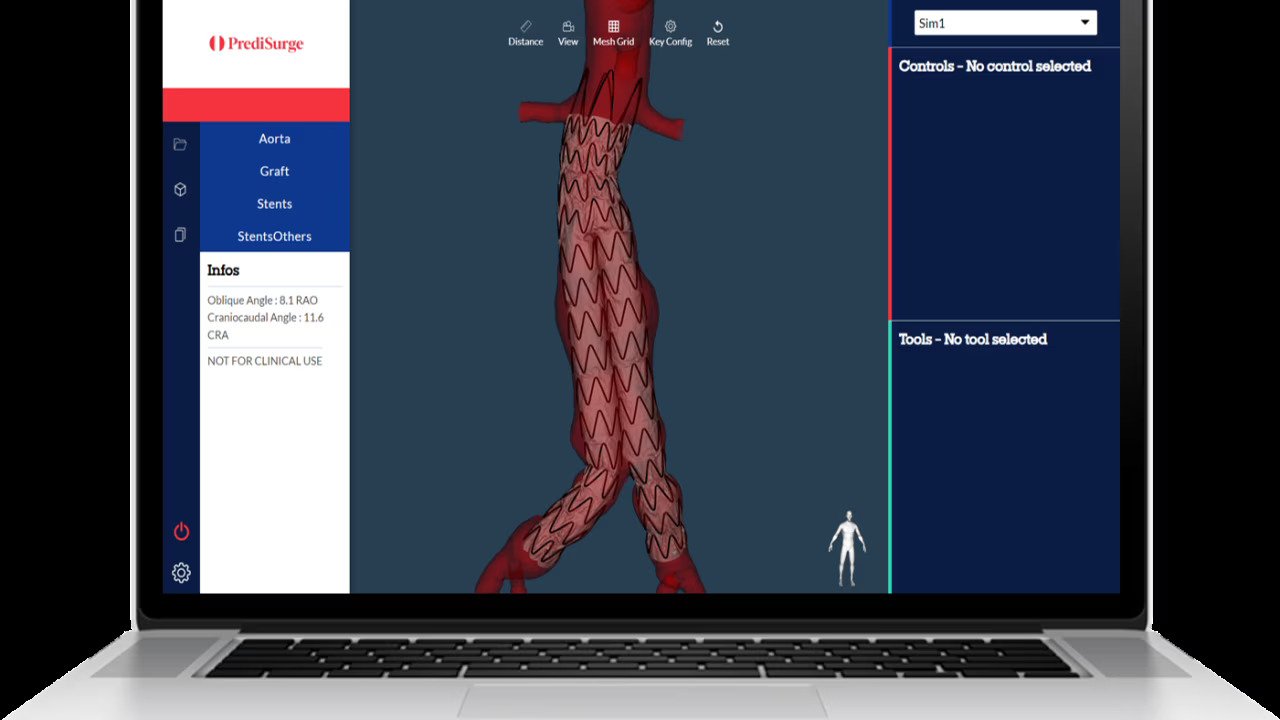Over the last decade, digital twins — virtual or digital representations of a physical object, system, or process in real-time — have been used for real-time data monitoring, simulations, predictive analytics, and collaboration. Examples include climate risk forecasting, factory floor planning, predictive precision medicine, and business process simulation.
And now, they are being used to simulate cardiovascular procedures.
Founded in 2017, French company PrediSurge develops predictive software solutions for treating vascular and structural heart diseases.
I spoke to CEO Bruno Virieux to find out more.
PrediSurge is a French startup spun out of the "Biomedical and Health" laboratory of the École des Mines de Saint-Étienne. A fortuitous meeting of minds was made possible due to the physical closeness of the engineering school and university hospital, leading to an opportunity to develop a digital tool for a physical problem.
He explained:
"When you have geography, it can create collaboration."
Traditionally, cardiovascuölar intervention relies on CT scans. Virieux surgeons would print a medical image, literally putting rulers against the image for measurements.
"They were estimating and making assumptions, and it relied massively on the surgeon's experience. So, reproductivity was a real issue."
Even worse, the number of complications following hospital endovascular procedures could be as high as 25 percent, resulting in anything from weeks in hospital to death.
In response to this need, PrediSurge has innovated with PlanOpTM, a software solution. This cutting-edge technology leverages pre-operative imaging data to generate numerical models that simulate the biomechanical behaviour of arteries and valves.

With 11 patents to develop software designed for standard endovascular aneurysm repair, PlanOpTM creates patient-specific digital twins, enhancing precision and personalised care in the medical field. It effectively offers a digital rehearsal of standard and complex EVAR interventions, making it possible for medical professionals to investigate different device implantation approaches and adjust therapy strategy for each specific patient.
I was curious how PrediSurge could disrupt an industry that is typically risk-averse and moves slowly. Virieux admitted that:
"In the beginning, it was a challenge. When you create a new product, you create a new market at the same time. So there were no rules.
We made the mistake of visiting surgeons and just showing them what we've developed and asking them to pay for the software.
However, everywhere we experienced the problem of having no reimbursement codes, and tightly financially controlled hospitals had no budget line for the software."
Fortunately, the company "cracked the code of the market" by going to the medical tech industry and demonstrating how surgeons can use it to improve procedure planning.
As a result, medtech companies can offer the software as a premium option in their suite of digital services and platforms.
Medtech companies can also use PrediSurge themselves to de-risk, predict in-vivo performances early, and reduce market time.
"So in terms of going to market, it is quite easy because we do not have to be removed from each surgeon and hospital country by country to find the right reimbursements."
The company intentionally keeps the UX relatively low-tech for the end users.
"We tried as much to be in the flow because when you try to disrupt too much too soon the medical process flow, it could be a big issue in terms of deployment and adoption of the solution.
I always try to say two things. Try to avoid too much too soon. It has to be simple."
Here, there's no fancy XR or VR. Instead, Predisurge can be accessed through a web browser via a unique link or printed as a PDF.
What's next for PrediSurge?
In 2023, the company raised a €6.5 million Series A round, bringing its funding to €10.5 million, and attained securing the CE certificate, a pivotal step in ensuring the compliance and safety of its products in the European market.
R&D is always a priority for PrediSurge, especially as the company manages the transitional challenges of scale. As Virieux explained, When you come from 100s of simulations annually to 1000s, it's a challenge to generate all of the digital twins.
PrediSurge has plans to deploy the software throughout Europe this year. It's undergoing an FDA clearance, resulting in international interest. An academic paper will soon be published detailing how the company was the first to simulate the mitral valve's behaviour digitally.



Would you like to write the first comment?
Login to post comments